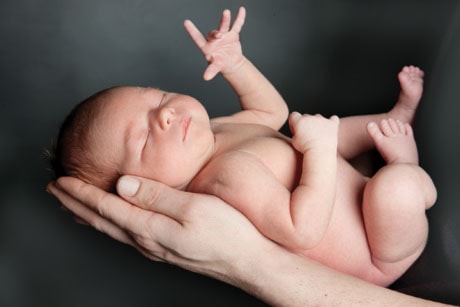In Canada, as in other modern, industrialized countries, we often take our standards of health and medical care for granted.
But it wasn’t that long ago here that child-bearing was a life-and-death experience. Women as well as their newborns entered into a grim game of chance, bringing new life into the world.
Today, we consider a death during or shortly after childbirth to be a rare tragedy, but in many places around the globe, humankind’s history of losing both mothers and infants at this time has changed little.
Even within industrialized societies, deaths per thousand childbirths can vary widely, and these tragic death rates are still a measure of the quality of care that countries can afford their citizens.
Mortality around childbirth and the first few years of life is a field of study that extends well beyond the advancement of medical knowledge and practice.
If you want to know the overall health of any society, looking at infant mortality rates give a picture of health, wealth, education, poverty, social structure and even type of government of a country.
Researchers can — and do — rank countries according to the risks involved with being a mother.
This Mother’s Day, what moms have to celebrate varies dramatically depending on where they live, according to Save the Children’s State of the World’s Mothers report, which ranks 164 countries on women’s access to health care, education and opportunities.
The best place in the world to be a mom is Norway, where maternal and child mortality rates are low, women’s life expectancy and years in school are high, and the average maternity leave is about one year, a new study measuring the well-being of mothers and babies shows.
Australia and Iceland join Norway at the top of Save the Children’s 12th annual Mothers Index, released Tuesday.
Canada ranks 20th, the United States places 31st and Afghanistan comes in last.
Meanwhile, eight of the world’s 10 worst countries to be a mother are in Sub-Saharan Africa.
Released every year in the days before Mother’s Day, the international non-profit group’s ranking analyzes the maternal and child indicators and other published information of 164 countries.
The survey considers Afghanistan the worst place to be a mother, with women having a life expectancy of 45 years — the world’s lowest — and one of every 11 women dying in childbirth.
It is also the worst place to be born. One of every five children in the country doesn’t live to age 5, and girls get only an average of five years of education.
A Save the Children press report states that despite ongoing conflict and rising civilian casualties, “expecting mothers in Afghanistan are at least 200 times more likely to die during childbirth than from bombs or bullets.”
By contrast, a typical Norwegian woman lives to be 83 years old, and just one in 175 will lose a child before his or her 5th birthday.
Skilled health personnel are present at virtually every birth in Norway, while only 14 per cent of births are attended in Afghanistan.
Eighty-two per cent of women in Norway use modern contraception, contrasted with less than 16 per cent of Afghan women.
“The human despair and lost opportunities represented in these numbers demand mothers everywhere be given the basic tools they need to break the cycle of poverty and improve the quality of life for themselves, their children, and for generations to come,” the report said.
The U.S.-based Save the Children said governments and international agencies could help change the lot of women and girls in developing countries by improving their education, health care and economic opportunities.
It said the U.S. and other industrialized nations could do more to improve education and health care for their own disadvantaged mothers and children.
The survey noted that the United States came in at 31 mainly because its maternal mortality rate of 1 in 2,100 is among the highest of any industrialized nation.
As a result, a woman in the U.S. is seven times more likely than one in Italy or Ireland to die from pregnancy-related causes, and her risk of maternal death is 15 times that of a woman in Greece.
In Canada, the maternal mortality rate is 1 in 5,600.
The United States does not do as well as most other developed countries when it comes to mortality of children 5 and under.
Eight of every 1,000 children born in the United States die before reaching their fifth birthday — a rate on par with Latvia.
For Canada, the rate is six per 1,000 births.
Countries in sub-Saharan Africa scored among the lowest on the survey, with eight placing in the bottom 10.
But money isn’t always the most important factor in improving the lives of mothers and their babies, said Save the Children, noting that Malawi has made notable progress in recent years.
Working with the U.S. Agency for International Development and other international partners, Malawi has developed a “homegrown” focus through which community health workers provide services in areas where doctors and nurses are unavailable.
In rural areas, people are now educated about infant and child health and offered de-worming, vaccinations, insecticide-treated mosquito nets and information about better sanitation habits.
Online: www.savethechildren.org
10 best places to be a mother
1. Norway
2. Australia
3. Iceland
4. Sweden
5. Denmark
6. New Zealand
7. Finland
8. Belgium
9. Netherlands
10. France
10 worst places to be a mother
155. Cent. African Republic
156. Sudan
157. Mali
158. Eritrea
159. DR Congo
160. Chad
161. Yemen
162. Guinea-Bissau
163. Niger
164. Afghanistan
